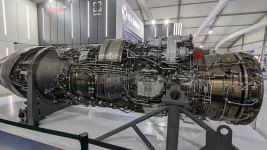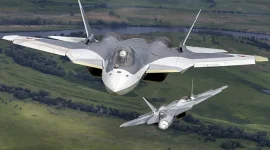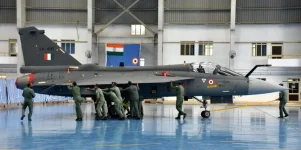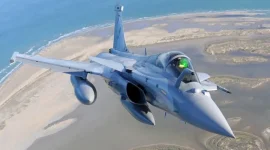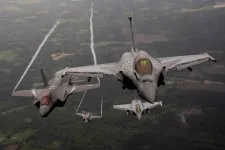- Views: 4K
- Replies: 25
The Indian Air Force (IAF) is evaluating a new-generation Russian jet engine as a transformative upgrade for its Su-30MKI fleet, which forms the backbone of its combat aircraft wing.
The engine, known as Izdeliye 177S, was presented by Russia's United Engine Corporation (UEC) at the Aero India 2025 exhibition.
While initially offered for India’s future fifth-gen AMCA fighter program, the engine has captured the IAF's attention for its potential to significantly enhance the capabilities of the more than 270 Su-30MKI jets currently in service.
A key advantage of the Izdeliye 177S is its seamless compatibility with the Su-30MKI airframe. The aircraft is currently equipped with the AL-31FP engine.
According to the specifications provided, the new 177S engine shares identical dimensions and weight with its predecessor. This allows for a direct replacement without needing costly and time-consuming structural modifications to the aircraft, a critical factor for any large-scale fleet upgrade.
The performance differences between the two engines are substantial.
The Izdeliye 177S delivers a maximum thrust of 14,500 kgf, a significant increase over the 12,500 kgf produced by the current AL-31FP. This boosts the aircraft's thrust-to-weight ratio from 8.2:1 to 9.5:1, promising enhanced agility and combat performance.
Furthermore, the new engine boasts a service life of 6,000 hours, triple that of the AL-31FP, and features lower specific fuel consumption, which would translate to reduced operational costs and greater combat range.
Adding to its modern design, the 177S includes a thrust vectoring control (TVC) nozzle treated with stealth coatings to reduce the aircraft's radar and infrared signatures, improving its survivability in modern combat scenarios.
This technological advantage sets it apart from the previously considered AL-41F engine, which powers Russia's Su-35 fighters.
For years, the AL-41F was viewed as a potential replacement, but the IAF was unconvinced. Despite offering a modest 16% thrust increase, it was seen as an evolutionary, not revolutionary, step and failed to justify the investment required for a major fleet-wide upgrade.
Complicating matters, integrating the AL-41F would have necessitated modifications to the Su-30MKI's airframe, adding cost and complexity to the project.
With plans for the Su-30MKI fleet to remain a core asset of India's air defence until 2060, the IAF is focused on long-term capability. The Izdeliye 177S aligns with this vision, offering a genuine generational leap in performance.
However, sources familiar with the discussions highlight significant risks. The engine has not yet achieved operational status, and Russia currently lacks a major domestic program to absorb it in large numbers.
This raises concerns about its production maturity and scale, suggesting India might need to co-invest in the final stages of its development and certification to integrate it onto the Su-30MKI.
In conclusion, the Izdeliye 177S engine presents the Indian Air Force with a compelling opportunity to revitalize its Su-30MKI fleet, equipping it with performance metrics comparable to next-generation aircraft. The potential gains in power, efficiency, and survivability are clear.
Yet, this opportunity is balanced by the strategic gamble of investing in a technologically advanced but unproven system that may require substantial Indian financial and technical participation to see it through to full-scale production.

